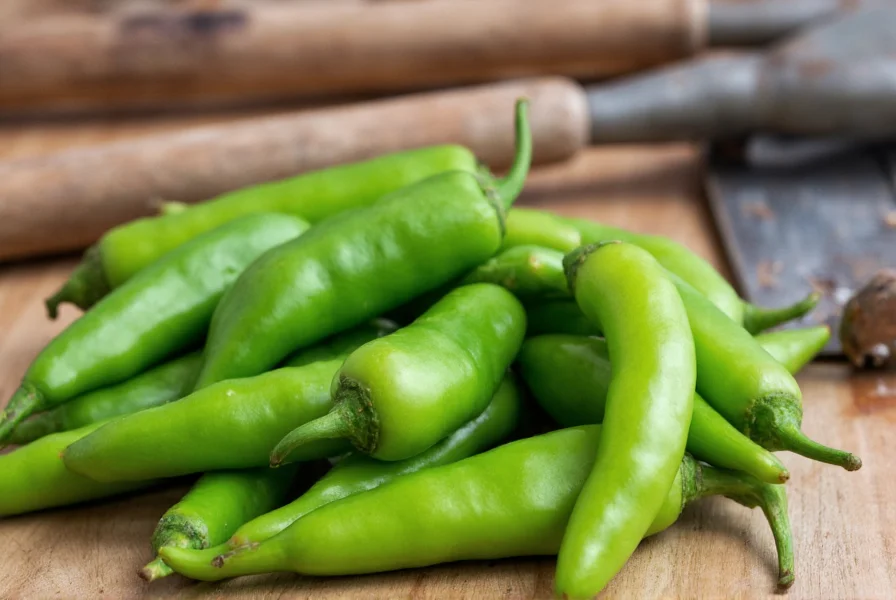Hatch chilies represent one of America's most distinctive regional food specialties, originating from the fertile floodplain of the Rio Grande in south-central New Mexico. These versatile peppers aren't a single cultivar but rather a collection of New Mexico-style chile varieties grown specifically in the Hatch Valley region, which spans approximately 30 miles along the river between Arrey and Tonuco Mountain.
Origin and Naming
The term "Hatch chili" refers to chile peppers cultivated in the Hatch Valley, named after the nearby town of Hatch, New Mexico. Despite common misconception, Hatch isn't a specific pepper variety but rather a geographical designation. The unique combination of high desert climate, mineral-rich soil, and irrigation from the Rio Grande creates ideal growing conditions that give Hatch chilies their characteristic flavor.
The agricultural tradition dates back over 400 years to when Spanish settlers introduced chile peppers to the region. Local farmers, including the influential Fabián García who developed the New Mexico No. 9 cultivar at New Mexico State University in 1913, refined cultivation techniques that established the distinctive qualities associated with what is a hatch chili today.

Characteristics and Flavor Profile
Hatch chilies exhibit remarkable diversity in heat and flavor depending on variety and ripeness:
| Characteristic | Green Hatch | Red Hatch |
|---|---|---|
| Harvest Time | August-September (unripe) | October (fully ripe) |
| Heat Level (Scoville) | 1,000-8,000 SHU | 1,500-10,000 SHU |
| Flavor Notes | Grassy, vegetal, slightly sweet | Smoky, earthy, fruitier |
| Common Uses | Roasted sandwiches, sauces | Chili powder, stews, adobos |
Popular cultivars grown in the Hatch Valley include Big Jim, Sandia, and Española, each offering different heat levels and flavors. The heat intensity varies significantly even within the same batch, making Hatch chilies appealing to both mild and heat-seeking palates.
Seasonality and Availability
True Hatch chilies have a limited seasonal availability that drives their culinary significance. The green harvest runs from late July through September, while the red harvest occurs in October. During peak season, local roasting tents appear throughout the Southwest, where vendors roast fresh chilies in rotating drums that fill the air with an unmistakable smoky aroma.
Outside the harvest season, consumers can find frozen, canned, or dried Hatch chilies, though purists argue these lack the vibrant flavor of freshly harvested and roasted peppers. Many enthusiasts freeze roasted Hatch chilies to enjoy their distinctive taste year-round.

Culinary Applications
Hatch chilies serve as the foundation of New Mexican cuisine and have gained national popularity. Their versatility makes them suitable for numerous preparations:
- Roasting: Essential for developing complex flavors; the blistered skin is typically removed before use
- Stuffed peppers: Large varieties like Big Jim work perfectly for rellenos
- Sauces and salsas: Form the base for both green and red New Mexican sauces
- Chili con carne: Adds distinctive regional flavor to this classic dish
- Infusions: Incorporated into cheeses, oils, and even craft beverages
Chefs value Hatch chilies for their ability to provide both subtle heat and complex flavor without overwhelming other ingredients. The peppers' moderate heat level (generally milder than jalapeños but hotter than poblanos) makes them accessible to a wide range of palates.
Common Misconceptions
Several misunderstandings surround what is a hatch chili:
- "Hatch" is not a specific variety but a regional designation for New Mexico chiles grown in the Hatch Valley
- Not all New Mexico chiles are Hatch chiles—only those grown in the specific Hatch Valley region can legitimately claim the name
- Hatch chilies aren't consistently hot—they range from mild to hot depending on variety and growing conditions
- California chiles are different—though visually similar, they lack the distinctive flavor profile of true Hatch chilies
The New Mexico Chile Advertising Act of 2010 helps protect the authenticity of Hatch-labeled products, though enforcement remains challenging as the term has become widely commercialized.
Frequently Asked Questions
What makes Hatch chilies different from other green chilies?
Hatch chilies differ due to their specific growing region in New Mexico's Hatch Valley, where unique soil composition and climate conditions create a distinctive flavor profile. Unlike generic "green chilies," true Hatch varieties offer a complex balance of grassy, sweet, and slightly smoky notes that vary by cultivar and ripeness.
When is Hatch chili season?
The green Hatch chili harvest runs from late July through September, with peak availability in August and early September. The red Hatch harvest occurs in October when the peppers fully ripen on the vine. Many Southwestern communities host annual chili roasting events during these months.
How hot are Hatch chilies compared to jalapeños?
Hatch chilies range from 1,000-8,000 Scoville Heat Units, making many varieties milder than jalapeños (2,500-8,000 SHU). However, some Hatch cultivars can reach similar heat levels to jalapeños. The heat varies significantly within the same batch, so individual peppers may differ substantially in spiciness.
Can I grow authentic Hatch chilies outside New Mexico?
While you can grow New Mexico chile varieties elsewhere, true Hatch chilies require the specific terroir of the Hatch Valley region. The combination of high desert climate, mineral-rich soil, and Rio Grande irrigation creates unique growing conditions that cannot be perfectly replicated elsewhere, resulting in different flavor characteristics.
What's the best way to preserve Hatch chilies?
The best preservation method involves roasting, peeling, and freezing Hatch chilies in airtight containers. This maintains flavor better than canning. Many enthusiasts roast large batches during harvest season and freeze them in meal-sized portions. Drying works well for red Hatch chilies, which can then be ground into chili powder or crushed for flakes.











 浙公网安备
33010002000092号
浙公网安备
33010002000092号 浙B2-20120091-4
浙B2-20120091-4